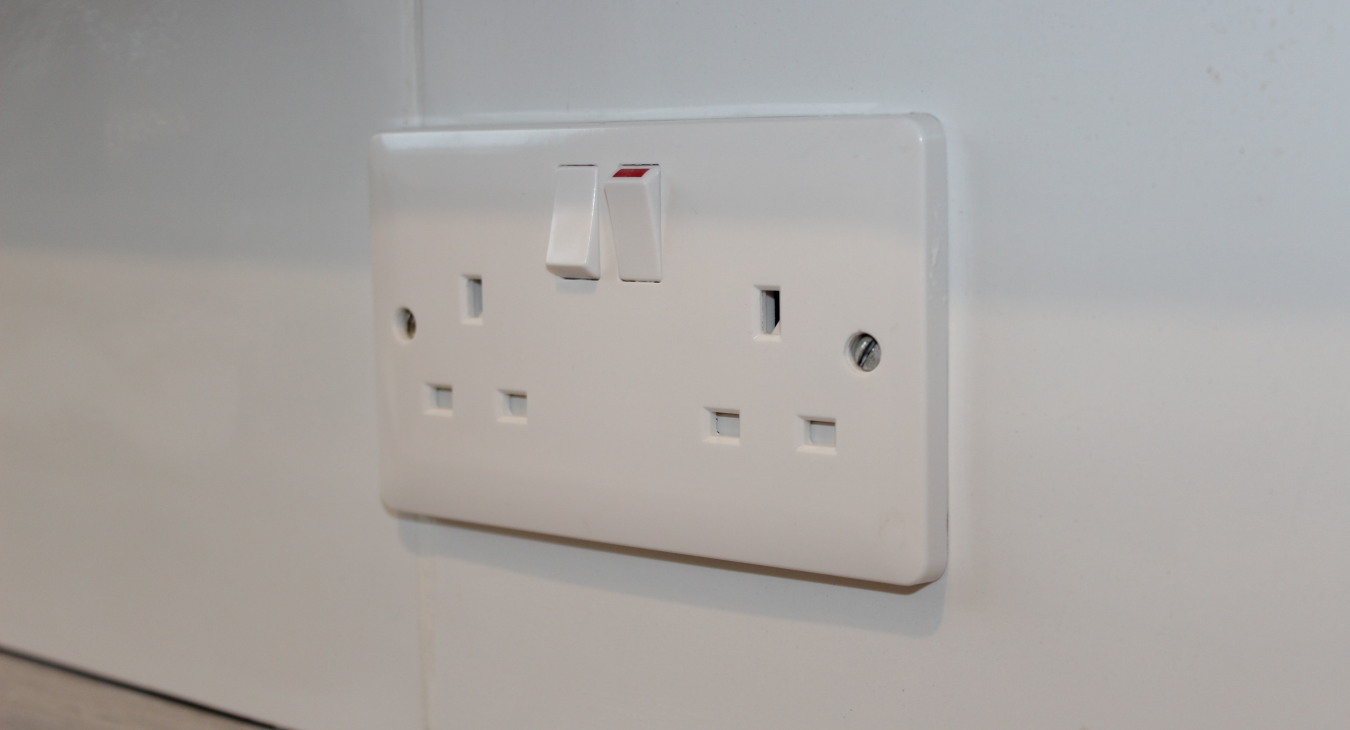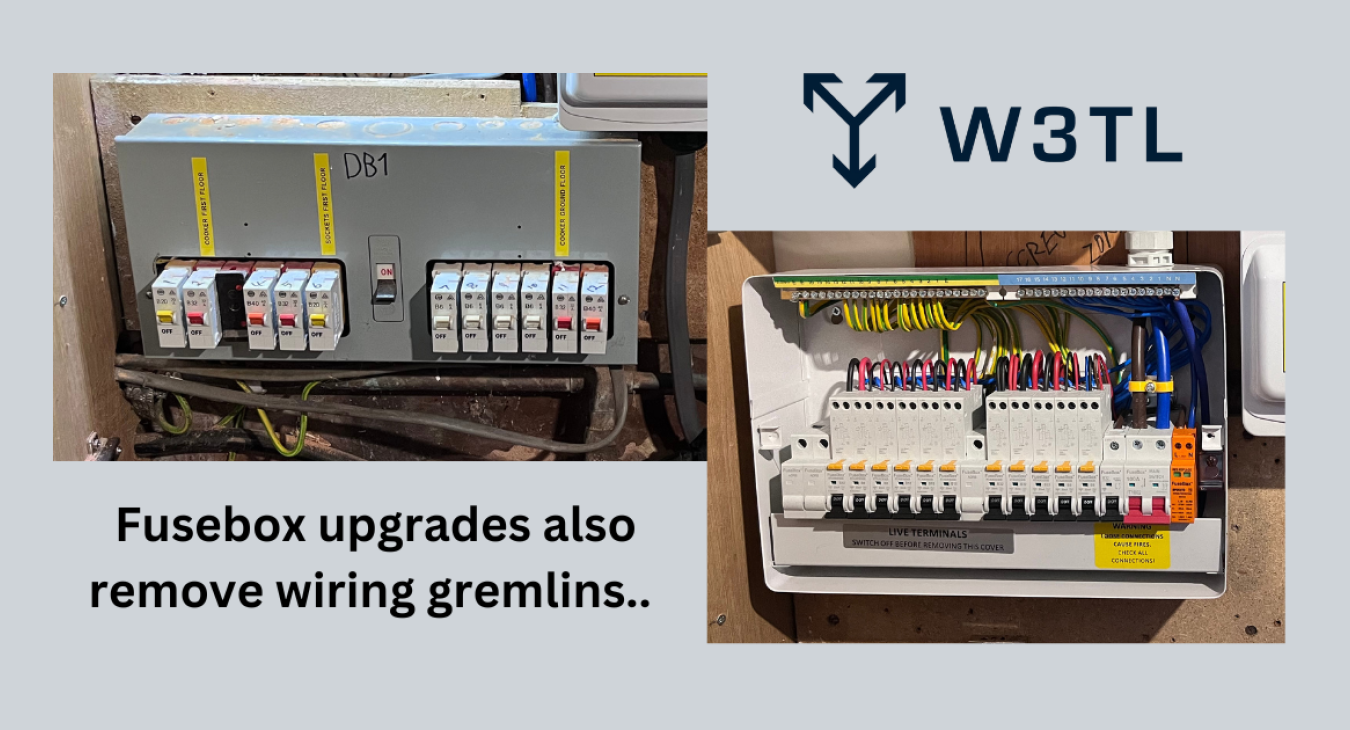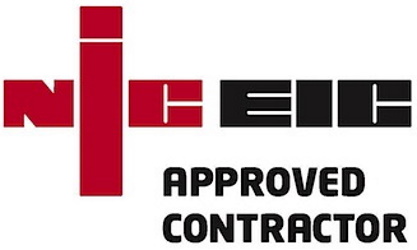
Read this quick guide before you call an electrician
The designer does not begin with some preconceived idea. Rather, the idea is the result of careful study and observation, and the design a product of that idea.
- Paul Rand
When installing socket outlets in to your home, it is easy to fall into the trap of putting in more than you need and then finding that you never use them.
We do this because that endless struggle to find an outlet is always so fresh in our mind because so many homes have so few sockets. We must be careful not to over correct, as more sockets than you need will add more than just electrician costs. The plasterer will take longer to go round all these extra sockets and the decorator will need to go around them too, so lets be deliberate and consider this carefully to make sure you get the right number of power points for you.
The building regulations say that you need four sockets in a room, and these are generally in each corner. This is a minimum and should only be used as a guide and not an instruction. Ultimately, it is your home and you will use this space differently to someone else. What we want to achieve is actually a reduction in waste.
You will want to avoid trailing leads, adapaters, multi-plugs, and any other means of cramming too many plugs into one point. For that, we need to think about what you intend to plug in, and where these items will be.
Stairs, landings, and communal corridors
Unless you have a specific reason for having socket outlets in these areas, I would strongly recommend that you limit these to just 1. This socket will be used exclusively for a vacuum cleaner if you have not yet made the leap to a battery-operated device and any more than this will likely add clutter, cost, and tempt you to leave items connected in a zone that is for transition only. If, like me, you do not like treading over or moving around things, it is best to reduce the temptation to have anything plugged in unless you have ample space for a side table with a lamp.
Be advised, for security reasons, if you have a side table and lamp, you will likely put your keys on it along with your phone that is charging from the socket and if you have a door with a letterbox close by, you could be setting yourself up for an easy break in or even car theft if your car keys are left there also. Whilst there are shielding devices that protect modern car keys against keyless theft, a simple magnet on a stick may see your car disappear in seconds.
The living room
This room will have endless devices and appliances requiring power, being only second to the kitchen by way of requirement. Up until the eighties, there was only a single socket installed in most rooms, with larger rooms having a few more. Nowadays we have around forty times more appliances: TV, games console, sky/virgin box, router, sound bar/amplifier/ DVD player, and chargers for phones, tablets, and laptops, got a fish tank? We want to install a socket for a reason and not just because we are covering the basics, these sockets can look out of place and add clutter if they are on the wall and never used – lets face it, a socket outlet is hardly going to win an interior design award.
The kitchen
Without too much effort, I could name at least 5 appliances that go on the countertop, and then another 5 that are integrated. What we want to avoid here, is the shotgun approach to control switches that I see on new builds, whereby the splash back is full of switches for appliances, ovens, hobs and then of course the socket outlets themselves.
The key to installing sockets in a kitchen is understanding the correct logic. I have seen customers argue that they must have a socket in a position, and then when the kitchen is finished they have admitted that perhaps it was a bit useless. Why? because the appliance they want to use wont fit on the countertop where they have put the socket, there are too many other things out and there isn't enough space to plug something in, or they simply like to use a different plug socket somewhere else because of convenience,
Remember to ask yourself: What will I be using this for? If its a kettle, it will likely stay out long term. If its a mixer, it will likely only be used when you are baking, and it you are baking, is there enough space to hold the mixer and roll out pastry? If not, then its best to place a socket outlet in a place where the intended use is achievable.
The dining room
There is almost no need for sockets in this place, except for one in a corner as a matter of convenience for hoovers. There may be a side table which could have a plug beside it for a hot plate or lamp, but other than that, the power requirements in this room are low. Consider if you are likely to put freestanding floor lamps in, they will need power and the building regulations advice for 'one in each corner' may apply here.
Bedrooms
The bedroom is no exception when you ask yourself to identify what is to be plugged in, and install accordingly.
An alternative to a plug socket, or a compliment to a socket, is one with USB outlets on them. How spartan you want to be with your devices in this room will depend on this decision, but if you have items that need charging, having some USB charging points at suitable places can free up points for lamps or other devices like straighteners or hair dryers. Try to install them however in a place that will reduce the likelihood of trailing leads.
Electrical devices and beds DO NOT MIX. The electric blanket is probably the only exception here. There have been numerous incidents where fires have begun due to a combination of overheating electronic items and bedding. For the most part, this is due to laptops being left on beds where the heat cannot escape freely and eventually, the heat has been enough to light the bedding. Leaving phones on charge on the bed is slightly less risky, as they do not have a fan that exists to eject heat from the device, that said, sockets near the bed is a risk for this, so be sensible and install sockets where they have a purpose.
Bathrooms
Its not that you can't have a socket in this room, it's that if you do, the socket needs to conform to the wiring standards, and if you do this, then the likely hood of you having one in the bathroom is slim. This is because bathrooms are generally smaller than the 3+ meters often required between the socket outlet and bath/shower.
What are you intending to plug in? If you know what it is, then there are other more suitable options available. The customer may always be right, but the electrician that installs a socket outlet in a bathroom because the customer said so is failing that customer. If you know what you want to have installed, speak with your electrician and get their advice, its almost never a NO, but more of a 'instead of that, we'll do this'.
Garden
Outside plug on the back of the house... Boring...
If your garden is rather long, then a socket on the back of the house, whilst super handy, is also a bit limiting. We're being deliberate in our design don't forget, so consider this:
Having a socket half way down the garden that allows you to get full reach of the garden with your 15m mower cord.
It can also be used to power local lighting in the future and be controlled via a wireless switch in the house. This OPENS UP OPTIONS!! that wouldn't exist if you hadn't first read this article!
Work from home
Are you still working from home? I'm at home in my office writing this right now. I have a laptop, a USB hub for my 2 phones and earphones, a TV is plugged in (it's off - I'm writing), and I have a printer, some lights, a camera, and some other things I could probably dig out. This isn't even that many!
If you arent using a laptop (why arent you using a laptop? if the power fails the laptop stays on...) then you will have a monitor and computer.
Given the volume of item you will find to plug in, just think back to being in the head space of eliminating trailing leads. This is your working enviroment, you need focus. Its ok to be messy with papers and memos, but trailing leads are a pain, worse if they get damaged as that can cause electrical problems that may trip the electrics and make you lose your work. Seriously, get a laptop.
Once you know where the sockets are going
Call me, ill get them put in. Super simps
















